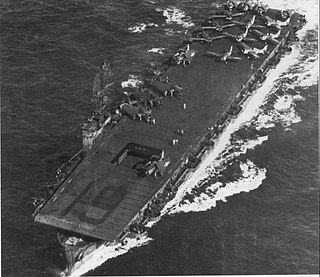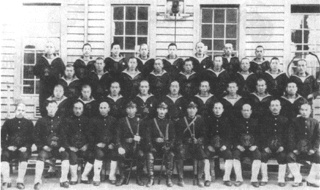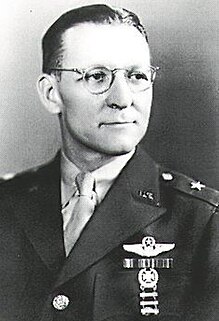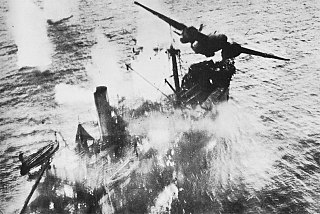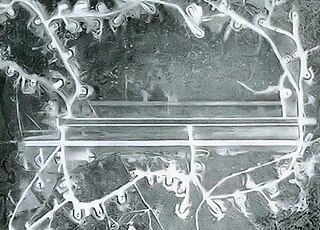| History | |
|---|---|
| Name: | SS Pruth |
| Owner: | Hain Steamship Company |
| Builder: | J.L. Thompson and Sons, Sunderland |
| Yard number: | 511 |
| Identification: | IMO number: 1139109 |
| Fate: | Wrecked upon Nateara Reef, Port Moresby in 1923 |
| General characteristics | |
| Tonnage: | 4698 gross register |
| Length: | 121.9 metres (400 ft) |
| Beam: | 16.2 metres (53 ft) |
| Depth: | 7.9 metres (26 ft) |
| Installed power: | 421 n.h.p. [1] |
| Propulsion: | Triple expansion engine [1] |
| Speed: | 10 knots [1] |
SS Pruth was a 4698 gross register ton [1] steam ship built by J.L. Thompson and Sons, Sunderland for the Hain Steamship Company in 1916. She was on a voyage from New York to Cairns, via Port Moresby when she was wrecked upon Natara Reef [ clarification needed ] near Port Moresby on 31 December 1923. Attempts to salvage her failed. [2] Her wreck became known as the "Moresby Wreck".
J.L. Thompson and Sons was a shipyard on the River Wear, Sunderland, which produced ships from the mid-18th century until the 1980s. The world-famous Liberty Ship was among the designs to be created, produced and manufactured at the yard's base at North Sands.

The City of New York, usually called either New York City (NYC) or simply New York (NY), is the most populous city in the United States. With an estimated 2018 population of 8,398,748 distributed over a land area of about 302.6 square miles (784 km2), New York is also the most densely populated major city in the United States. Located at the southern tip of the state of New York, the city is the center of the New York metropolitan area, the largest metropolitan area in the world by urban landmass and one of the world's most populous megacities, with an estimated 19,979,477 people in its 2018 Metropolitan Statistical Area and 22,679,948 residents in its Combined Statistical Area. A global power city, New York City has been described as the cultural, financial, and media capital of the world, and exerts a significant impact upon commerce, entertainment, research, technology, education, politics, tourism, art, fashion, and sports. The city's fast pace has inspired the term New York minute. Home to the headquarters of the United Nations, New York is an important center for international diplomacy.

Cairns is a city in the Cairns Region, Queensland, Australia. It is on the east coast of Far North Queensland. The city is the 5th-most-populous in Queensland and ranks 14th overall in Australia.
Her wreck was used for strafing and bombing practice by the United States Army Air Forces Fifth Air Force and the Royal Australian Air Force in 1942 and 1943 during World War II. Six Allied aircraft crashed while undertaking the strafing and bombing practice.

The United States Army Air Forces, informally known as the Air Force, or United States Army Air Force, was the aerial warfare service component of the United States Army during and immediately after World War II (1939/41–1945), successor to the previous United States Army Air Corps and the direct predecessor of the United States Air Force of today, one of the five uniformed military services. The AAF was a component of the United States Army, which in 1942 was divided functionally by executive order into three autonomous forces: the Army Ground Forces, the Services of Supply, and the Army Air Forces. Each of these forces had a commanding general who reported directly to the Army Chief of Staff.

The Fifth Air Force is a numbered air force of the United States Air Force Pacific Air Forces (PACAF). It is headquartered at Yokota Air Base, Japan. It is the U.S. Air Force's oldest continuously serving Numbered Air Force. The organization has provided 70 years of continuous air power to the Pacific since its establishment in September 1941.

The Royal Australian Air Force (RAAF), formed in March 1921, is the aerial warfare branch of the Australian Defence Force (ADF). It operates the majority of the ADF's fixed wing aircraft, although both the Australian Army and Royal Australian Navy also operate aircraft in various roles. It directly continues the traditions of the Australian Flying Corps (AFC), formed on 22 October 1912. The RAAF provides support across a spectrum of operations such as air superiority, precision strikes, intelligence, surveillance and reconnaissance, air mobility, space surveillance, and humanitarian support.


